1. Design Pain Points: The Dilemma of Small Kitchens
Small kitchens often face the awkward situation of “nowhere to place the refrigerator, and countertops cluttered with miscellaneous items.” Traditional refrigerators are large, with a thickness exceeding 60cm, and cramming them into a sideboard can lead to deformation and hinder heat dissipation. With the rise of open kitchens, dining areas are taking on more functional demands, making the integrated design of refrigerator and sideboard a necessity for small spaces!
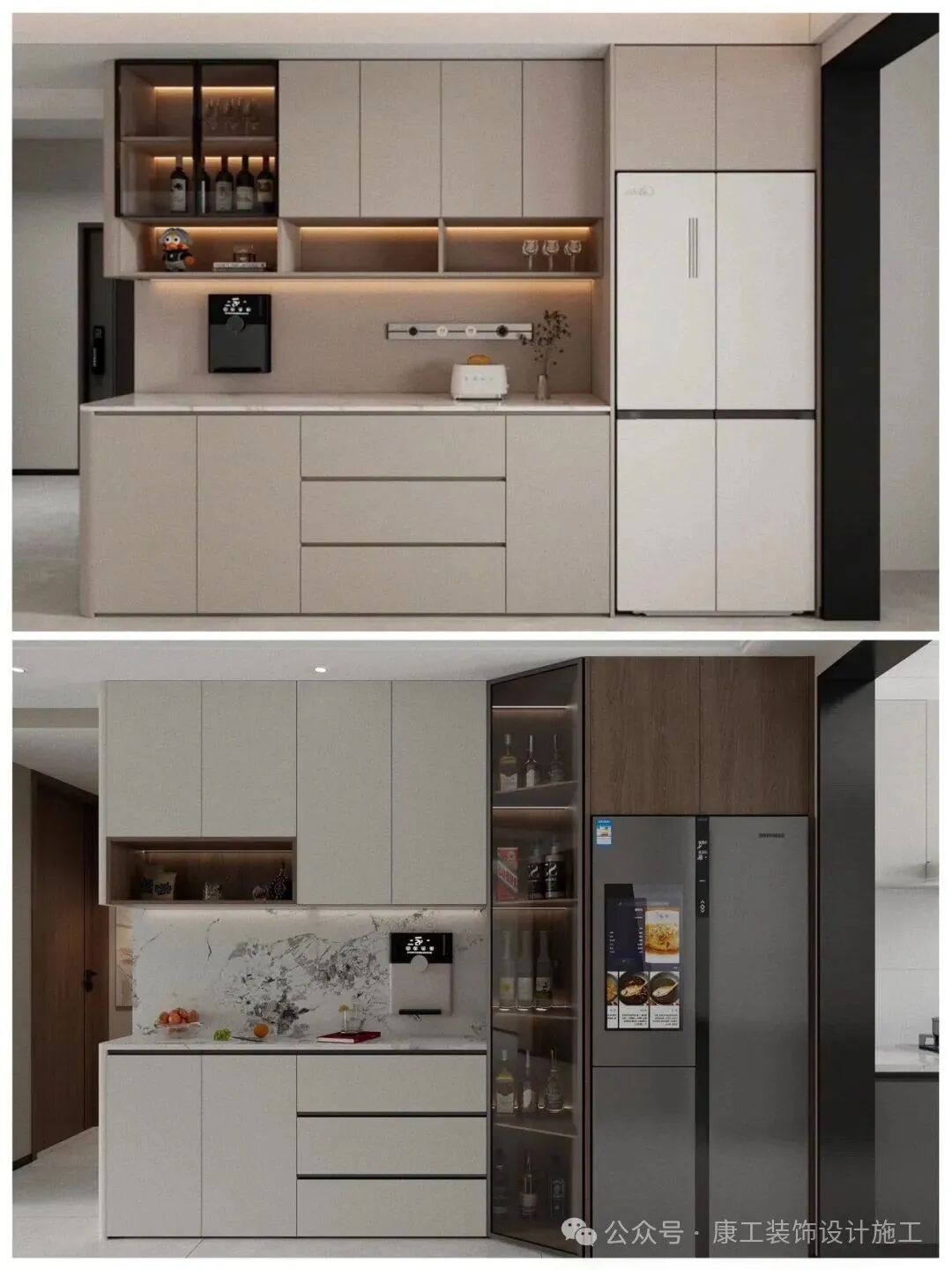
2. Several High-Efficiency Designs to Maximize Every Square Meter
1. Ultra-Slim Fully Integrated Refrigerator Design
– Core Advantage: A slim refrigerator with a thickness of only 45cm (like the Midea 427L model) perfectly matches a 45cm deep sideboard, saving over 25% space.
– Applicable Scenario: Dining areas less than 6㎡ that require hidden storage.
– Detail Highlights:
– Bottom heat dissipation, with only a 4mm gap on both sides;
– Countertop height of 90cm, flush with the cabinet countertop for visual continuity.
2. Angled Connection Design
– Core Advantage: The 45° angled sideboard wraps around the depth difference between the refrigerator (60cm) and the sideboard (45cm), reducing abruptness.
– Applicable Scenario: Non-load-bearing wall areas adjacent to the dining area and kitchen.
– Detail Highlights:
– The angled sideboard can be designed as a closed cabinet or a glass display cabinet;
– Corner space can be enhanced with a shelf for added practicality.
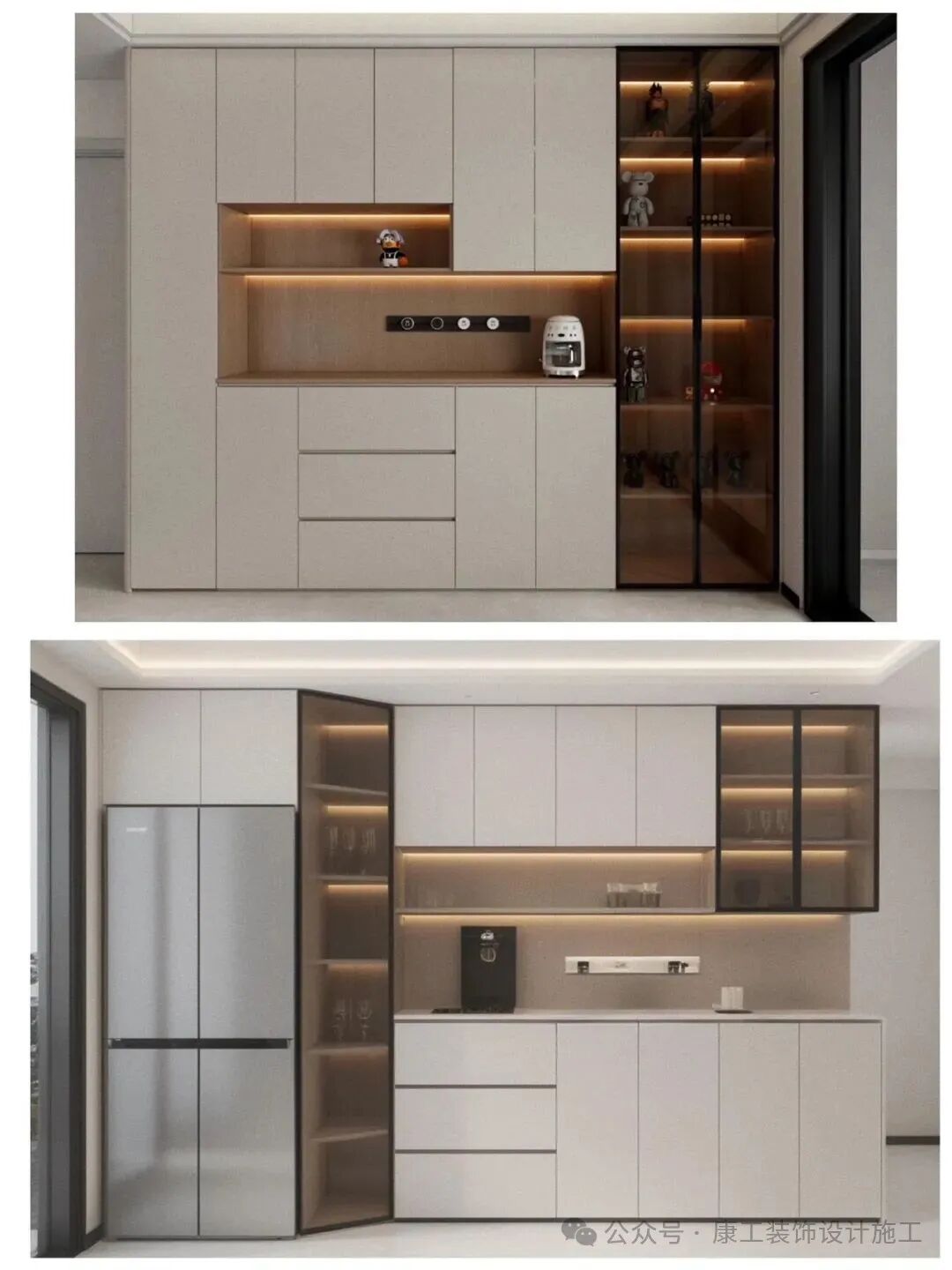
3. Booth + Sideboard Combination
– Core Advantage: The booth replaces dining chairs, providing storage underneath, paired with an integrated refrigerator cabinet to save aisle space.
– Applicable Scenario: Narrow dining areas with a width of less than 2.5m.
– Detail Highlights:
– Booth depth of 50cm, with overhead cabinets designed for storing dry goods;
4. Layered Embedded Design
– Core Advantage: The refrigerator cabinet is embedded into a non-load-bearing wall, creating a layered effect with the sideboard, reducing the sense of spatial oppression.
– Applicable Scenario: Apartment layouts where partial wall removal is possible.
– Detail Highlights:
– A 10cm heat dissipation channel is reserved above the refrigerator;
– The layered area includes track sockets for convenient use of small appliances.
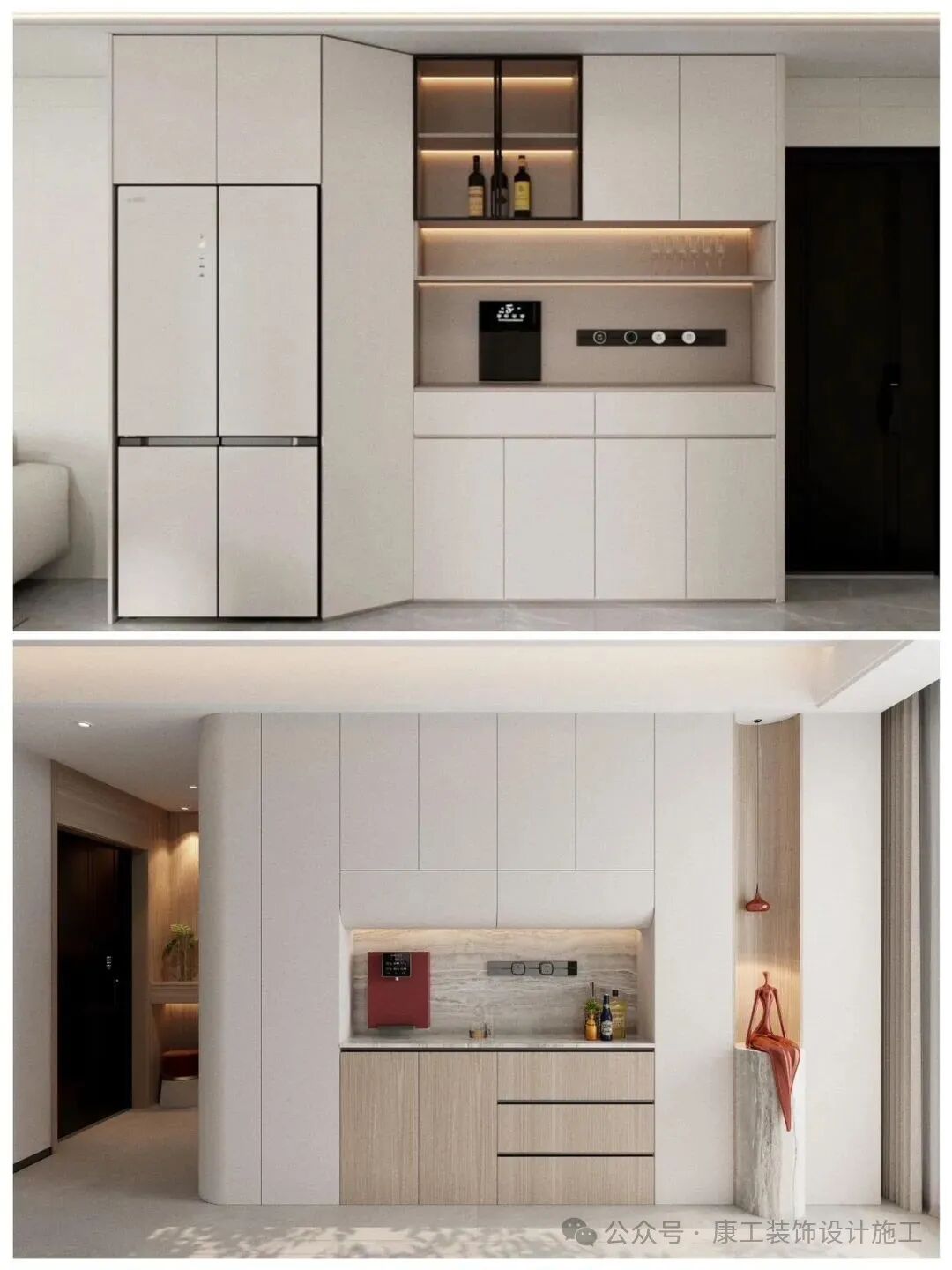
5. Four-Section Multifunctional Cabinet
– Core Advantage: A four-section layout with upper cabinets + hollow countertop + drawers + lower cabinets increases storage efficiency by 40%.
– Applicable Scenario: Households needing to balance appliance storage and display functionality.
– Detail Highlights:
– Hollow countertop height of 50cm, suitable for microwaves and coffee machines;
– Drawers include built-in cutlery dividers for clearer categorization.
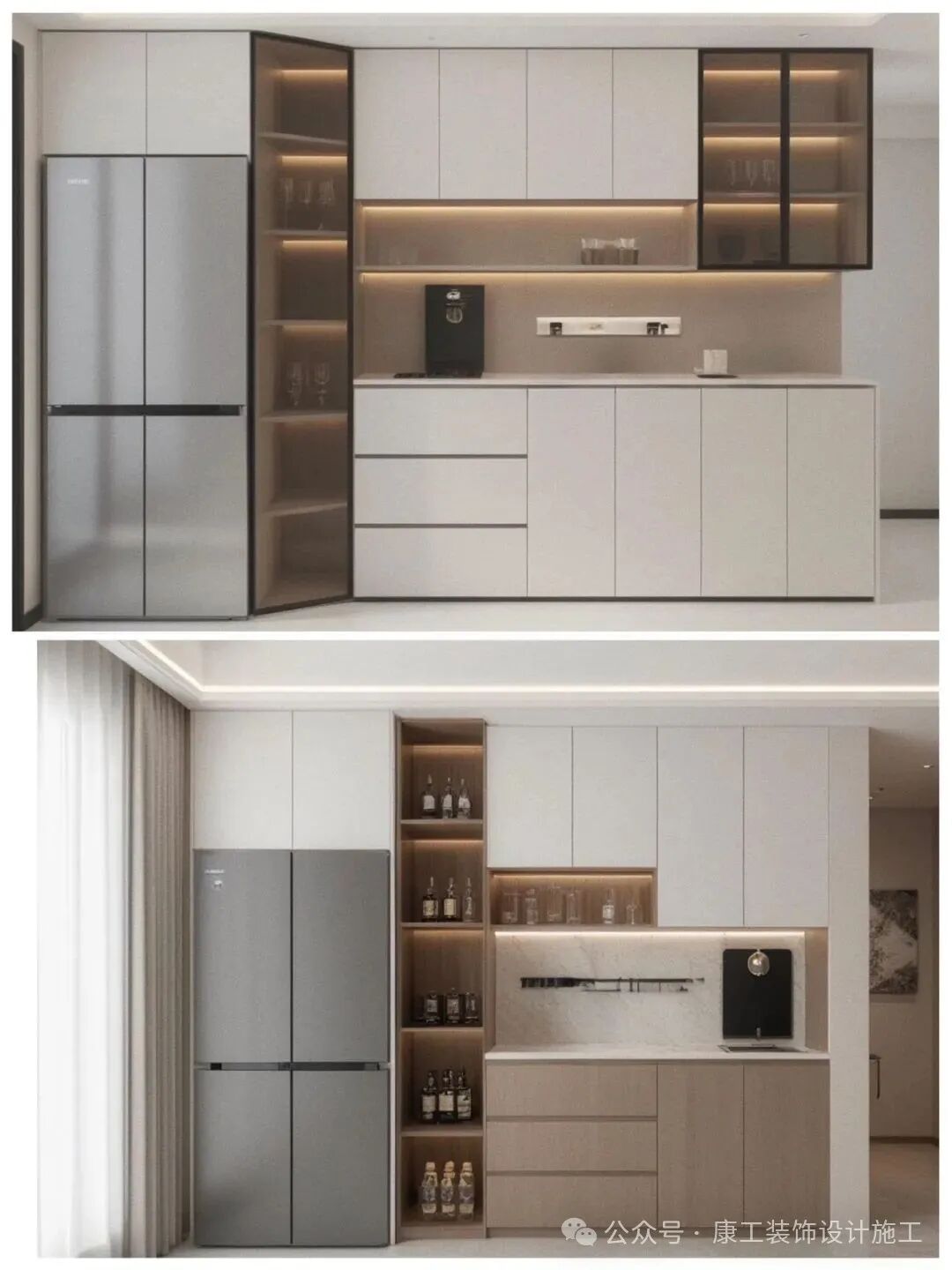
3. Pitfall Guide: Essential Details for Small Spaces
1. Precise Dimension Reservations
– Reserve 5-10mm expansion gaps on both sides of the embedded refrigerator, and 2cm heat dissipation space at the top;
– Recommended sideboard depth of 45cm (slim) or 58cm (standard), with upper cabinets 1.5m from the ground to avoid head bumps.
2. Balance Functionality and Aesthetics
– Choose matte PET skin-like boards or tempered glass for cabinet doors, which are oil-resistant and easy to clean;
– Unify the refrigerator panel and cabinet color (recommended light gray or cream white) to minimize presence.
3. Circuit and Heat Dissipation Planning
– Reserve refrigerator sockets inside the side cabinet to avoid occupying depth;
– Prioritize models with bottom heat dissipation, avoiding traditional back heat dissipation that can lead to cabinet dampness.
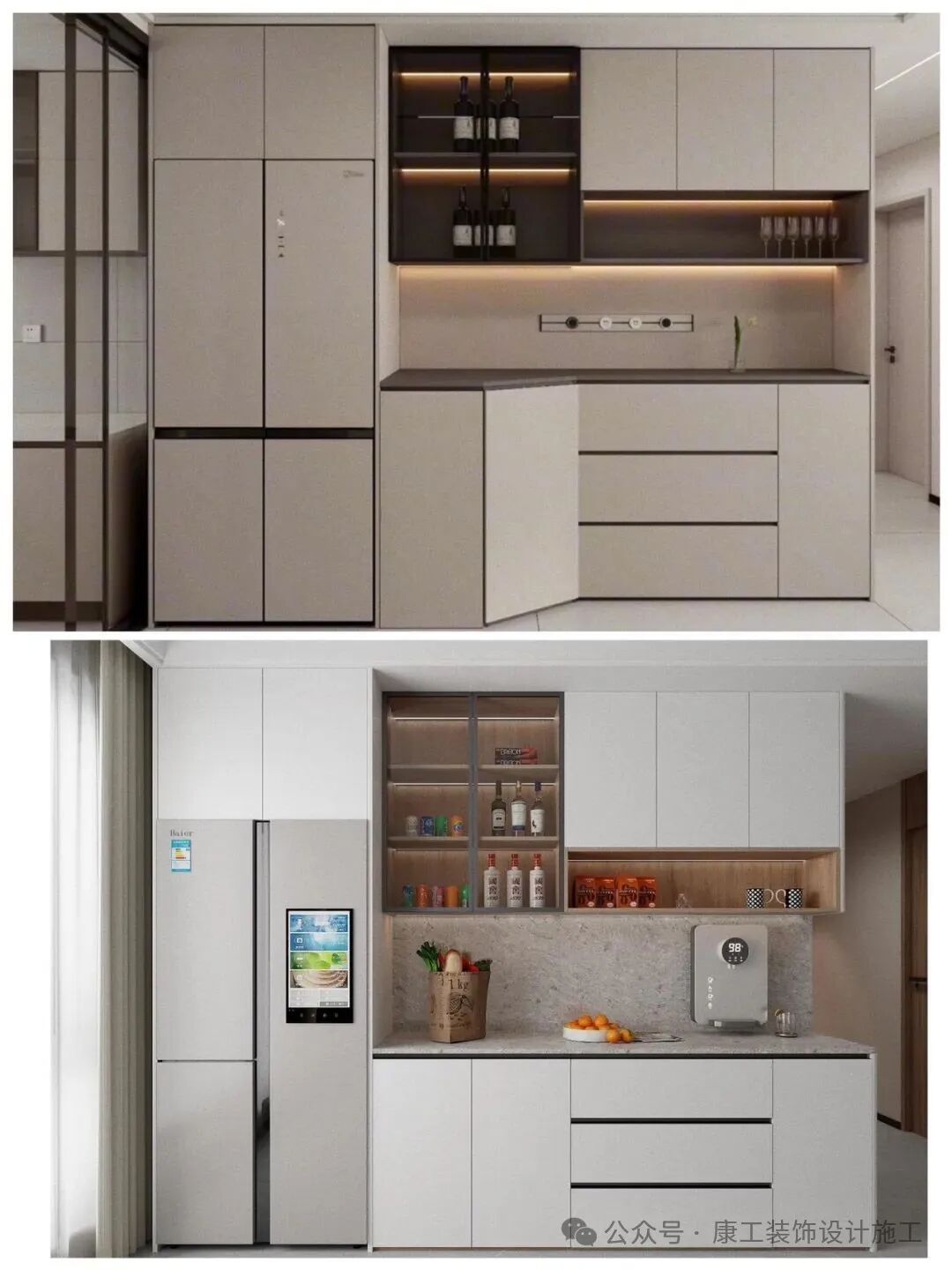
Conclusion by Engineer Kang: In small space renovations, “hiding” is more important than “exposing”! The integrated refrigerator and sideboard not only resolve spatial awkwardness but also make the dining area the second core zone of the home.
Be sure to save this guide, and leave your floor plan in the comments to customize your exclusive solution! Everyone should avoid blindly following trends and choose a style and layout that suits them; a home is for oneself, not for showing off to others!